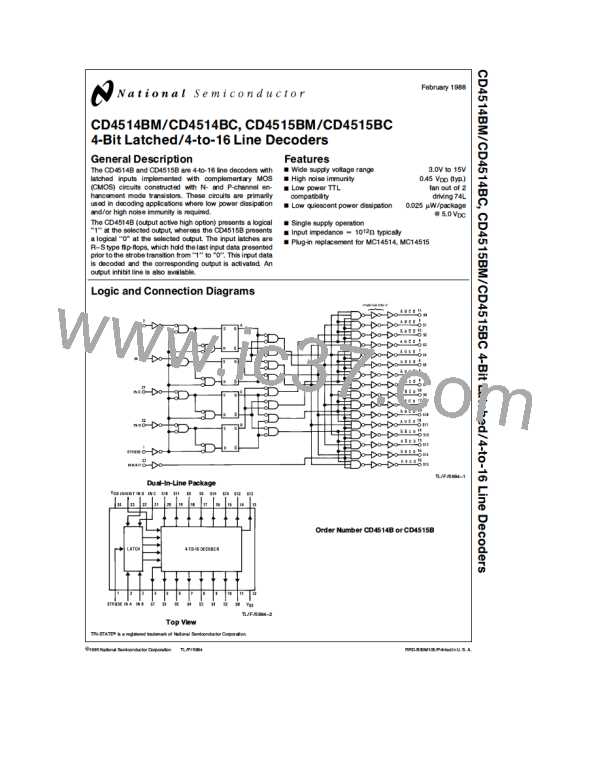Applications
Two CD4512 8-channel data selectors are used here with
the CD4514B 4-bit latch/decoder to effect a complex data
routing system. A total of 16 inputs from data registers are
8 times faster than the shift frequency of the input registers,
the most significant bit (MSB) from each register could be
selected for transfer to the data bus. Therefore, all of the
most significant bits from all of the registers can be trans-
ferred to the data bus before the next most significant bit is
presented for transfer by the input registers.
selected and transferred via a TRI-STATE data bus to a
É
data distributor for rearrangement and entry into 16 output
registers. In this way sequential data can be re-routed or
intermixed according to patterns determined by data select
and distribution inputs.
Information from the TRI-STATE bus is redistributed by the
CD4514B 4-bit latch/decoder. Using the 4-bit address,
INA–IND, the information on the inhibit line can be trans-
ferred to the addressed output line to the desired output
registers, A–P. This distribution of data bits to the output
registers can be made in many complex patterns. For exam-
ple, all of the most significant bits from the input registers
can be routed into output register A, all of the next most
significant bits into register B, etc. In this way horizontal,
vertical, or other methods of data slicing can be implement-
ed.
Data is placed into the routing scheme via the 8 inputs on
both CD4512 data selectors. One register is assigned to
each input. The signals on A0, A1 and A2 choose 1-of-8
inputs for transfer out to the TRI-STATE data bus. A fourth
signal, labelled Dis, disables one of the CD4512 selectors,
assuring transfer of data from only one register.
In addition to a choice of input registers, 1–16, the rate of
transfer of the sequential information can also be varied.
That is, if the CD4512 were addressed at a rate that is
TL/F/5994–5
5

 NSC [ National Semiconductor ]
NSC [ National Semiconductor ]